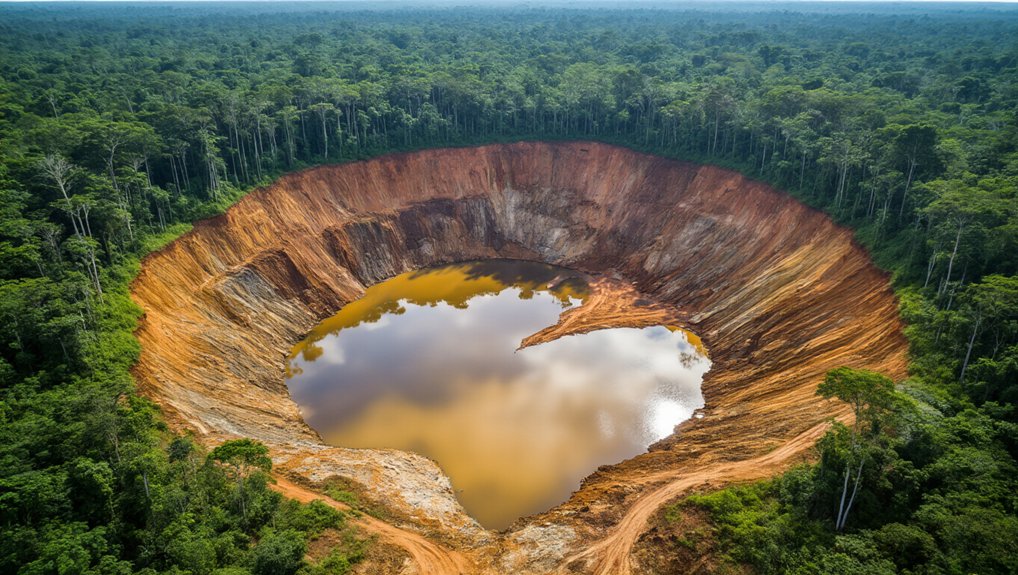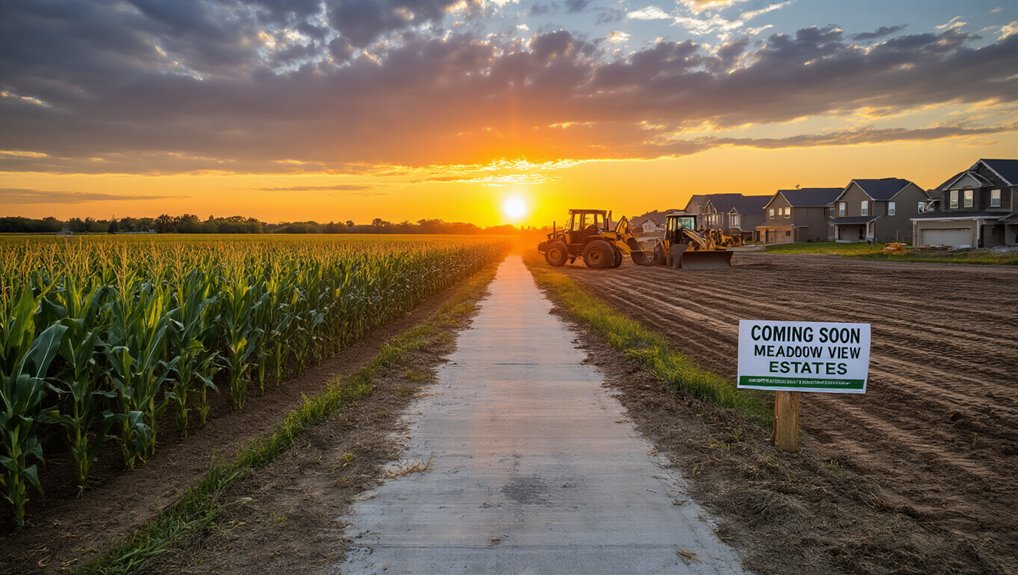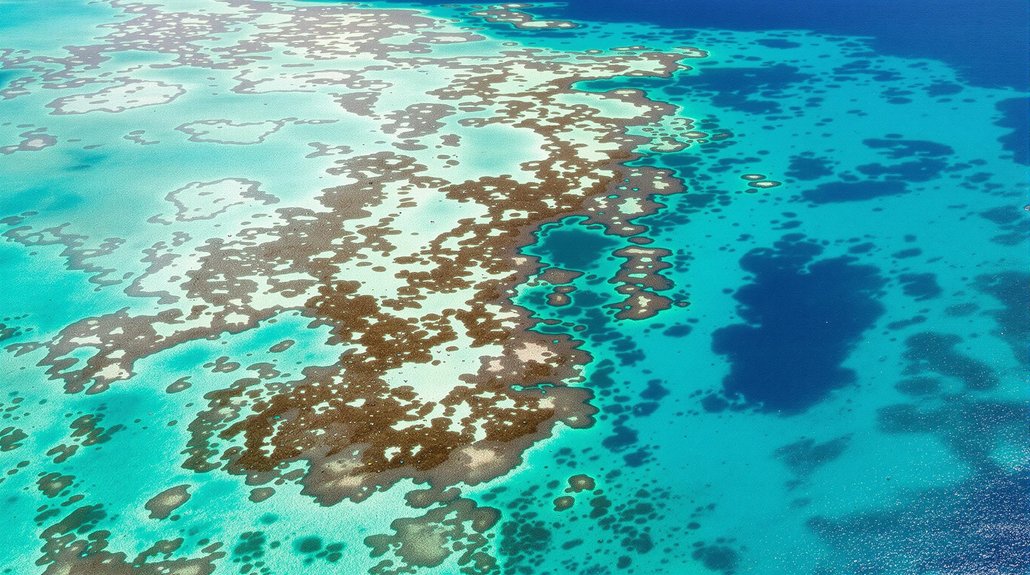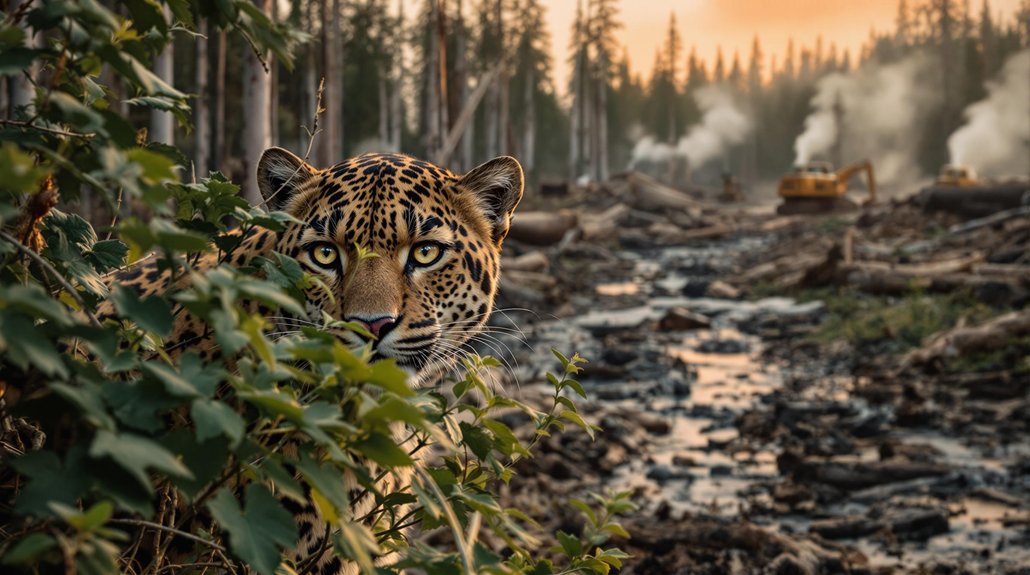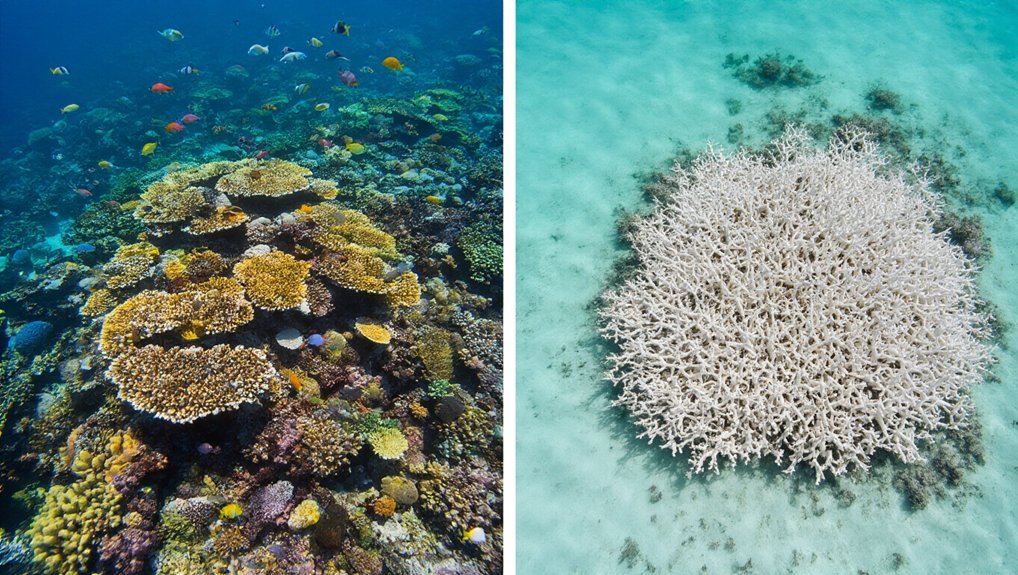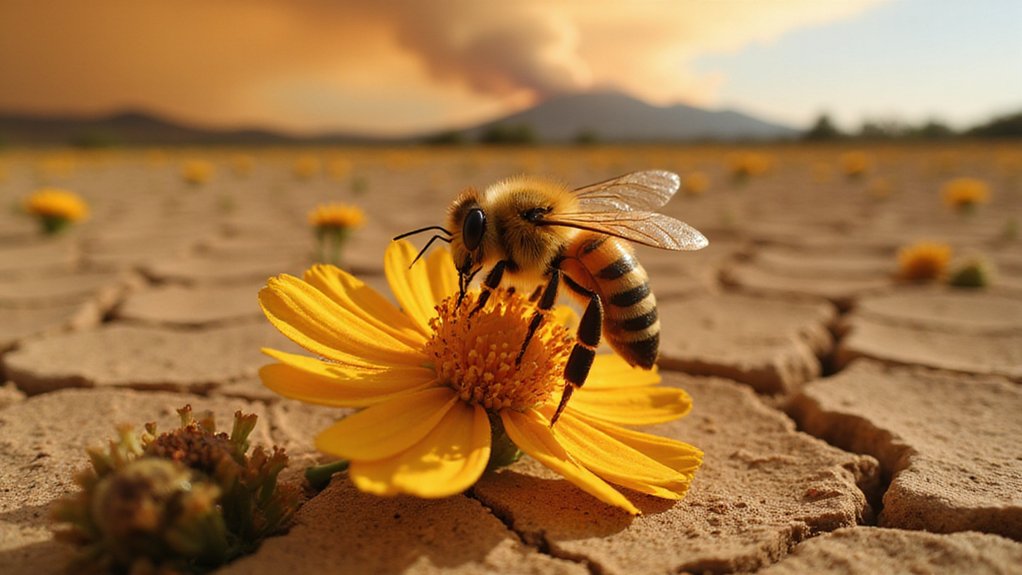When gold miners abandon their pits in the Amazon, they leave behind a moonscape that refuses to heal. Between 2001 and 2013, these operations stripped away 1,680 square kilometers of rainforest. That’s 617 square miles of what used to be green, breathing forest. Gone.
The Guiana Shield bears the worst scars. Gold mining accounts for up to 90% of all deforestation there. In Peru’s Madre de Dios region alone, small-scale miners destroyed over 95,000 hectares from 1980 to 2017. The numbers keep climbing – 120,000 hectares lost to mining between 2001 and 2020 across the Amazon. Mining infrastructure extends the damage, causing deforestation up to 70 kilometers into surrounding forests.
Here’s the kicker: these lands don’t bounce back. Forest recovery rates on abandoned mining sites are among the lowest ever recorded for tropical forests. Some areas show virtually zero tree growth even four years after the digging stops. Compare that to land cleared for cattle or crops, which at least shows some recovery. Mining sites? They just sit there, barren.
The carbon math is brutal. Mining-related deforestation bleeds over two million tonnes of forest carbon annually from the Amazon. Even in the rare spots where something manages to grow, carbon sequestration drops by 21,000 tons per year. The Guiana Shield forests hold twenty billion tonnes of aboveground carbon. Every hectare lost to gold mining hits harder than land converted to farms. Of the 450,000 hectares of tropical primary rainforests lost globally to mining from 2001 to 2020, the Amazon absorbed a devastating share.
Mining bleeds two million tonnes of forest carbon from the Amazon annually.
Why won’t these forests grow back? Miners scrape away the nutrient-rich topsoil completely. Heavy machinery compacts what’s left into concrete-hard earth where roots can’t penetrate. Mercury and mining chemicals poison the soil. Water patterns get scrambled by pits and tailing ponds. Seeds wash away in the erosion.
The damage concentrates along river systems where alluvial gold deposits hide. Brazil, Peru, Guyana, Suriname – they’re all getting hammered. Protected areas aren’t safe either.
Natural regeneration? Forget it. These moonscapes need active restoration – reconstructed topsoil, replanting, the works. Without intervention, former mining sites remain biological deserts. The Amazon’s gold rush leaves a legacy measured not in wealth, but in dead zones that refuse to return to life.
References
- https://news.mongabay.com/2020/08/amazon-gold-mining-wipes-out-rainforest-regeneration-for-years-study/
- https://www.wri.org/insights/how-mining-impacts-forests
- https://bioengineer.org/the-recovery-of-amazonian-forests-post-gold-mining-an-elusive-challenge/
- https://www.leeds.ac.uk/news-environment/news/article/4619/gold-mining-restricts-amazon-rainforest-recovery
- https://phys.org/news/2020-06-gold-restricts-amazon-rainforest-recovery.html
